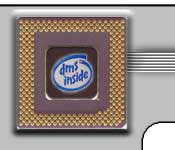|
Optimization of Composite Polymer Gas Sensor
Arrays for Single-Analyte Multiple-Interferent Applications
D.M. Wilson and Sam McKennoch

Results for optimizing an array of composite polymer gas sensors
for sensing one of five analytes in the presence of up to four interferents
are presented. The optimized array consists of a heterogeneous array
of up to ten points (unlike sensors) in multi-dimensional sensor
space. The optimization techniques presented here are linear, since
the composite polymer sensors in their useful (low concentration)
operating range exhibit linear and additive response characteristics.
The optimization of these arrays produces maximum separability between
analytes, demonstrating the trade-off between the addition of both
information and variability induced by increasing the size of the
heterogeneous array. Optimization results for sensing acetone, hexane,
thf, toluene, and ethanol in the presence of interferents result
in array sizes that are significantly less than the maximum available
number of sensors (10). This result adds fuel to the argument that
fewer sensors are better; the argument for more sensors is also
made in the context of the electronic nose systems where significant
chemical diversity is required.
|



